Digital
Nomads
Nomadism Enters the Mainstream
Nomadism Enters the Mainstream
Digital Nomads: People who embrace a location-independent, technology-enabled lifestyle have moved from eccentrics to mainstream in less than a decade.
Digital Nomads: People who embrace a location-independent, technology-enabled lifestyle have moved from eccentrics to mainstream in less than a decade.
Digital nomads defy a single definition, yet all choose to combine working remotely and traveling for various reasons and lengths of time. They are united by their passion for travel, desire for adventure, and interest in new cultures.
Digital Nomad Numbers Increase, but Begin to Level Out
Today, 17.3 million American workers currently describe themselves as digital nomads, growing by 2% from 2022 after increasing a staggering 131% from the pre-pandemic year 2019 to 2022.
Let loose by the shift to remote work during the pandemic, the digital nomad lifestyle entered the mainstream in the post pandemic era, with about 11% of US workers in 2023 describing themselves as digital nomads.
Number of American Digital Nomads
(in millions)

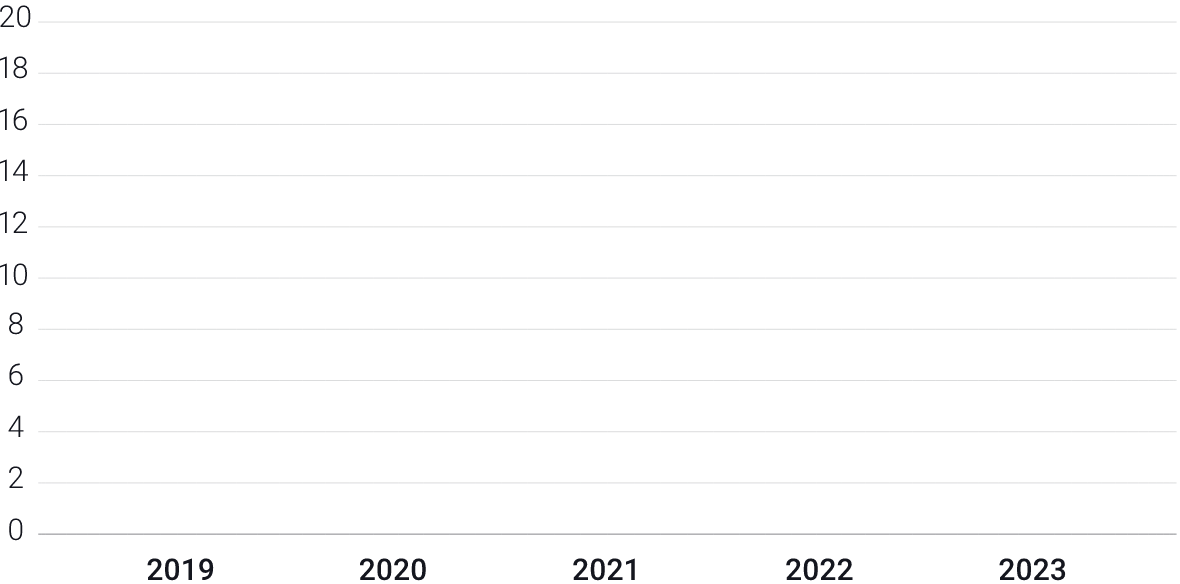
'Back to Office' Politics Means 'Tethered Nomading': Traditional Workers Decline, while Independent Nomads Grow
In 2023, the number of American digital nomads with traditional jobs decreased by 4%. Traditional jobholders have employers who can, and are, calling them back to office.
But in 2023, the number of American digital nomads with traditional jobs decreased by 4%.
Although most companies have significantly increased their employees' work location flexibility, most traditional jobholders are expected to adhere to a 'hybrid' style approach with some in-office work. According to WFH Research, almost 80% of all American traditional jobholders who can work fully remotely now report working from an employer office at least two days per week.
Despite the slight decline year over year, there are still three times the number of nomads with traditional jobs than before the pandemic in 2019. Some of these traditional jobholding nomads have adapted to return to office policies by traveling closer to their employer's location. These 'tethered nomads' actively travel but stay close enough to visit as required.
Share of Digital Nomads by Worker Type
Share of Digital Nomads
by Worker Type
(in millions, % = share by worker type)

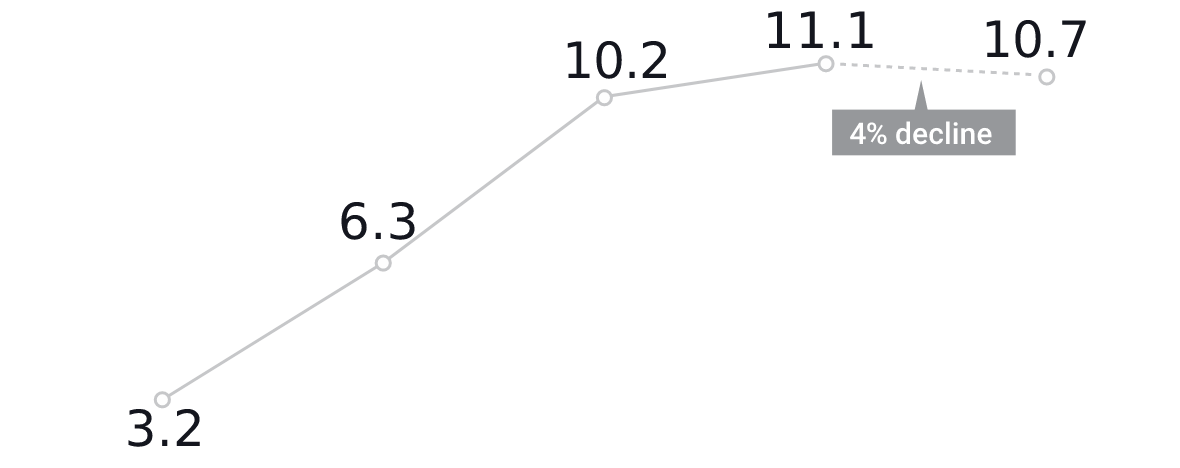
The number of digital nomads who are independent workers (freelancers, self-employed, independent contractors, etc.) continued to grow, increasing a substantial 14% compared to 2022.
Digital Nomads Skew Young, But the Share of Older Digital Nomads Increased in 2023
Most digital nomads (58%) are younger - Gen Z (21%) and Millennial (37%). The rapid increase in Gen Z digital nomads (born 1997 to 2012) is the primary driver - in 2019, the oldest Gen Z were just 22, and very few were digital nomads. We expect Gen Z's share of digital nomads to increase in coming years too.
Older cohorts-Gen Xers (born 1965-1980) and Baby Boomers (born 1946-1964)-increased their share of digital nomads to 42% in 2023. The main driver? The decline in the COVID-19 pandemic.
Gender wise, men outnumber women, 56% to 43%, and 1% reporting in as nonbinary. This is consistent with study results from prior years.
Gen Z
Millennials
Gen X
Baby
Boomers
Share of Digital Nomads
(by age cohort)

Digital Nomads Skew Young, But the Share of Older Digital Nomads Increased in 2023
Most digital nomads (58%) are younger - Gen Z (21%) and Millennial (37%). The rapid increase in Gen Z digital nomads (born 1997 to 2012) is the primary driver - in 2019, the oldest Gen Z were just 22, and very few were digital nomads. We expect Gen Z's share of digital nomads to increase in coming years too.
Older cohorts-Gen Xers (born 1965-1980) and Baby Boomers (born 1946-1964)-increased their share of digital nomads to 42% in 2023. The main driver? The decline in the COVID-19 pandemic.
Gender wise, men outnumber women, 56% to 43%, and 1% reporting in as nonbinary. This is consistent with study results from prior years.
Share of Digital Nomads
(by age cohort)
Gen Z
Millennials
Gen X
Baby
Boomers


Happier, Healthier, Wealthier: Digital Nomads Are Among the Most Satisfied Workers
Digital nomads have higher satisfaction levels with their work than most other workers. This is a consistent finding throughout MBO's previous digital nomad studies and held true again in 2023. In line with prior years, 80% of digital nomads reported being highly satisfied, and 9% reported being satisfied with their work. This compares with 59% of workers who are non-digital nomads reporting being highly satisfied with their work and 17% reporting being satisfied.
Workers Highly Satisfied with their
Work and Lifestyle
Digital nomad satisfaction levels are also high due to the flexibility and freedom that comes when one seamlessly blends their work and lifestyle.
For this reason, it's not surprising that being able to travel when and where they want is the top benefit of being a nomad. Other benefits include a better work/life balance than a traditional lifestyle, experiencing new cultures, and meeting new people.
Both traditional jobholders and independent digital nomad workers report liking the work/life flexibility and autonomy associated with being a digital nomad. Digital nomads are also confident about the future. Eight in ten (79%) say they are optimistic about the future of their career.
Despite high satisfaction levels, the share of digital nomads who plan to continue as digital nomads over the next two to three years declined in 2023.
Given the high satisfaction rates among digital nomads, the logical conclusion is that this decline relates to return-to-office policies rather than a change in the overall trajectory or interest in becoming a digital nomad.

Happier, Healthier, Wealthier: Digital Nomads Are Among the Most Satisfied Workers
Digital nomads have higher satisfaction levels with their work than most other workers. This is a consistent finding throughout MBO's previous digital nomad studies and held true again in 2023. In line with prior years, 80% of digital nomads reported being highly satisfied, and 9% reported being satisfied with their work. This compares with 59% of workers who are non-digital nomads reporting being highly satisfied with their work and 17% reporting being satisfied.
Workers Highly Satisfied with their Work and Lifestyle
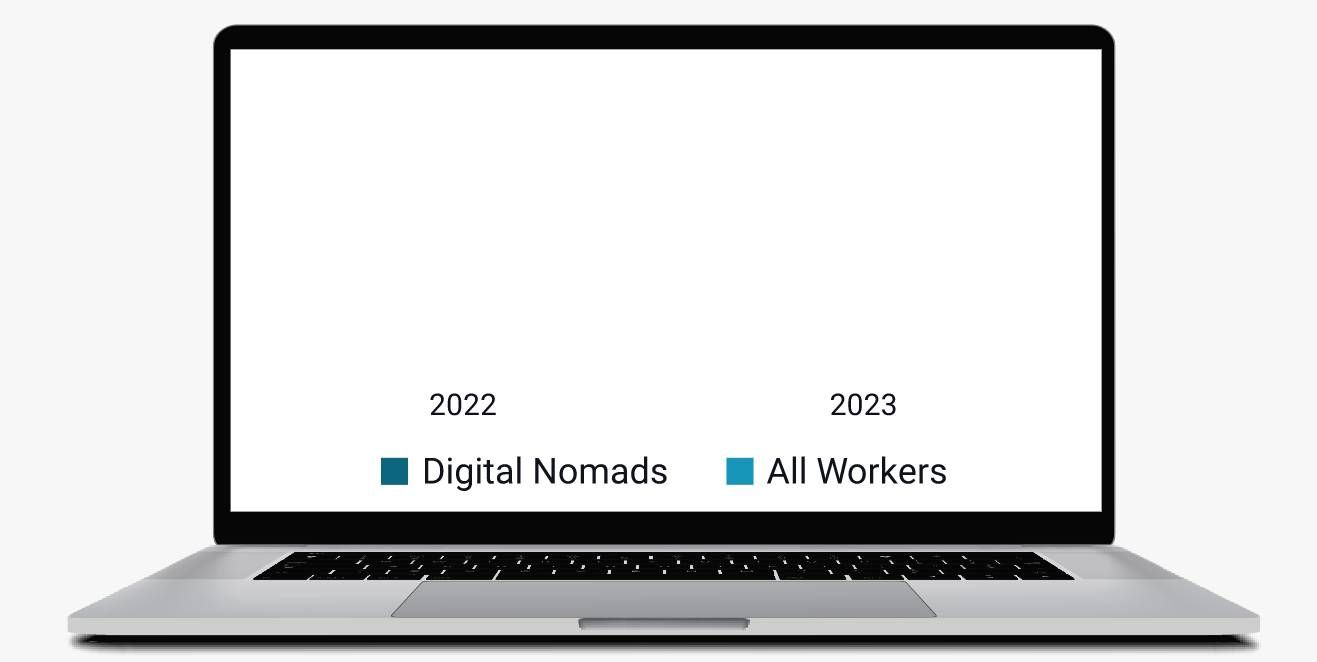
Digital nomad satisfaction levels are also high due to the flexibility and freedom that comes when one seamlessly blends their work and lifestyle.
For this reason, it's not surprising that being able to travel when and where they want is the top benefit of being a nomad. Other benefits include a better work/life balance than a traditional lifestyle, experiencing new cultures, and meeting new people.
Both traditional jobholders and independent digital nomad workers report liking the work/life flexibility and autonomy associated with being a digital nomad. Digital nomads are also confident about the future. Eight in ten (79%) say they are optimistic about the future of their career.
Despite high satisfaction levels, the share of digital nomads who plan to continue as digital nomads over the next two to three years declined in 2023.
Given the high satisfaction rates among digital nomads, the logical conclusion is that this decline relates to return-to-office policies rather than a change in the overall trajectory or interest in becoming a digital nomad.
Domestic Travel Increases as Nomads Get Called Back to the Office
Over one-third (36%) of American digital nomads report they plan on spending more time in the U.S. next year and less time abroad. While 47% of nomads report planning on at least some international travel, only 10% plan to spend the entire year outside the US.
The study results also continue to show a shift towards digital nomads visiting fewer locations but spending more time at each stop. Similar to results in 2021 and 2022, close to half of digital nomads report that this is their plan for the next year. In our interviews, digital nomads report that this approach, often called slowmad travel, provides a more active social life, allows them to learn more about local cultures, reduces travel stress, and improves work productivity.
Travel Plans for American Digital Nomads
Travel exclusively
in the U.S.
Some international
Travel
Entire time outside
of the U.S.
Domestic Travel Increases as Nomads Get Called Back to the Office
Over one-third (36%) of American digital nomads report they plan on spending more time in the U.S. next year and less time abroad. While 47% of nomads report planning on at least some international travel, only 10% plan to spend the entire year outside the US.
The study results also continue to show a shift towards digital nomads visiting fewer locations but spending more time at each stop. Similar to results in 2021 and 2022, close to half of digital nomads report that this is their plan for the next year. In our interviews, digital nomads report that this approach, often called slowmad travel, provides a more active social life, allows them to learn more about local cultures, reduces travel stress, and improves work productivity.
Travel Plans for American
Digital Nomads
Travel exclusively in the U.S.
Entire time outside
of the U.S.
Some international
Travel
Digital Nomad Families
Digital Nomading Becomes a Family Affair
The median age of digital nomads is 39, and over half (53%) are married or living with a partner. Even more surprising, 24% of digital nomads report traveling with their children.
But traveling with kids is more challenging and complex than traveling alone or even as a couple. The top challenges cited by digital nomads traveling with kids are the expenses associated with traveling as a family, safety and health concerns, the lack of stability and routines, educational challenges, and socialization issues for their children.
Digital nomads with families deal with these challenges in a variety of ways. One popular way is being slomads-digital nomads who change locations at a slower pace and visit fewer places than most other digital nomads. By spending less time traveling and more time in fewer locations, they reduce the stress and complications of being nomadic. They also provide their kids with more stability and routines and allow them more opportunities to socialize with other kids.
DEFINITION:
Slomads - digital nomads who change locations at a slower pace and visit fewer places than most other digital nomads.
DEFINITION:
Slomads - digital nomads who change locations at a slower pace and visit fewer places than most other digital nomads.
Digital Nomad Families
report traveling
with pets
report traveling
with kids
Because most digital nomad kids are school age (71%), education is a significant issue and challenge.
Digital nomad families also spend more time traveling domestically than other digital nomads. In fact, 74% of digital nomads with families report planning to travel exclusively in the US over the next year, compared to 53% of digital nomads overall.
Pets are also part of some digital nomad families-14% of digital nomads report traveling with pets.
Stealth Nomads Offer Risks to Enterprises
Digital nomads with traditional jobs, because of their travels, can leave their employers open to a variety of regulatory, tax, compliance, and legal risks. Despite these risks, few organizations have formal digital nomad policies and programs. To an extent, digital nomads are off the grid, literally and figuratively. In many cases, they work out arrangements with their immediate bosses, go nomadic under informal "don't ask, don't tell" agreements, or travel without their organization's knowledge.
In this year's survey, 14% of digital nomads with traditional jobs reported that their employer does not know they are nomadic. An additional 18% say their company does not have a digital nomad policy, but their boss has given them permission to work nomadically. In other words, about
For more information, view the MBO Digital
Nomad Policy Template.
one-third of digital nomads with traditional jobs are "hidden employees," meaning the company does not know where they are working. This means they could break local employment laws and regulations without their employer being aware that they are doing so.
Does your employer know you are a digital nomad?
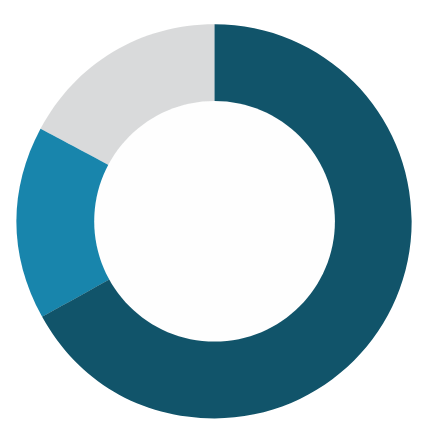

Stealth Nomads Offer Risks to Enterprises
Digital nomads with traditional jobs, because of their travels, can leave their employers open to a variety of regulatory, tax, compliance, and legal risks. Despite these risks, few organizations have formal digital nomad policies and programs. To an extent, digital nomads are off the grid, literally and figuratively. In many cases, they work out arrangements with their immediate bosses, go nomadic under informal "don't ask, don't tell" agreements, or travel without their organization's knowledge.
In this year's survey, 14% of digital nomads with traditional jobs reported that their employer does not know they are nomadic. An additional 18% say their company does not have a digital nomad policy, but their boss has given them permission to work nomadically. In other words, about one-third of digital nomads with traditional jobs are "hidden employees," meaning the company does not know where they are working. This means they could break local employment laws and regulations without their employer being aware that they are doing so.
For more information, view the MBO Digital
Nomad Policy Template.
Does your employer know you are a digital nomad?

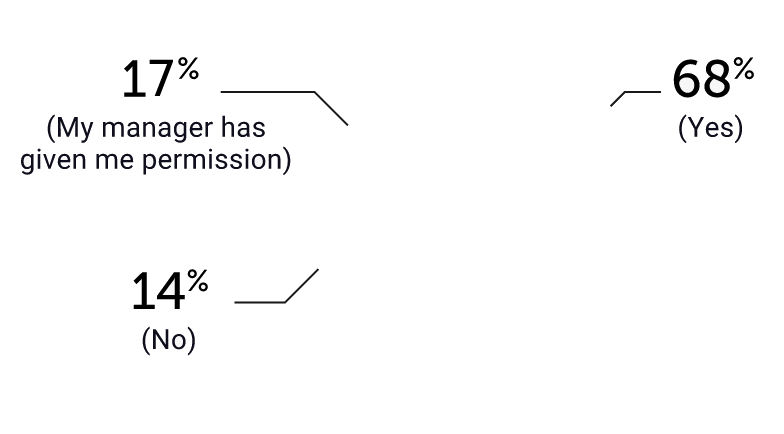
Armchair Nomads: Millions Aspire to Join the Nomad Ranks
The digital nomad trend has long attracted traditional media attention and a strong social media following. Combined with the natural interest in travel, millions of workers-traditional and independent alike-aspire to become digital nomads.
Each year we ask adult Americans who aren't digital nomads if they plan on becoming digital nomads over the next two to three years. In 2023, the results project 24 million saying yes and 46 million saying maybe. This is a 3% decrease compared to 2022.

These results are consistent with the overall decline in the number of digital nomads and are likely due to fewer people believing they will have the ability to work fully remotely going forward.
Digital Nomadism: Mainstream, with a Strong Foundation for Future Growth
When we started the MBO Partners' Digital Nomad study series five years ago, digital nomads were considered an eccentric and fringe group of nomadic workers.
But digital nomadism is now mainstream, and this year 17.3 million Americans-a stunning 11% of American workers-are digital nomads.
The size and scale of this group have created a strong foundation for future growth:
- 1 More organizations are putting in place digital nomad policies
- 2 Countries and cities are competing for Digital Nomads
-
3
- A growing support industry is making it easier to be a digital nomad 4
- Remote work technology and methods continue to improve
After the explosive growth of American digital nomads between 2020 and 2022, 2023 has seen a relatively modest increase. However, this slowdown was expected due to the pandemic easing, life and work returning to normal, and more workers expected to show up at the office at least a few days a week.
Despite their aspirations, our studies indicate that only about 7% to 9% of those saying they will become digital nomads actually follow through, The rest will continue to be what we call "armchair digital nomads," those who follow the exploits of others instead of becoming digital nomads themselves.
But the factors driving the growth of digital nomadism are still in place. People want to travel, awareness of and interest in digital nomadism is strong, and the shift to remote work will continue to be a powerful enabler. Because of these factors, we expect the digital nomad trend to grow in the coming years.


